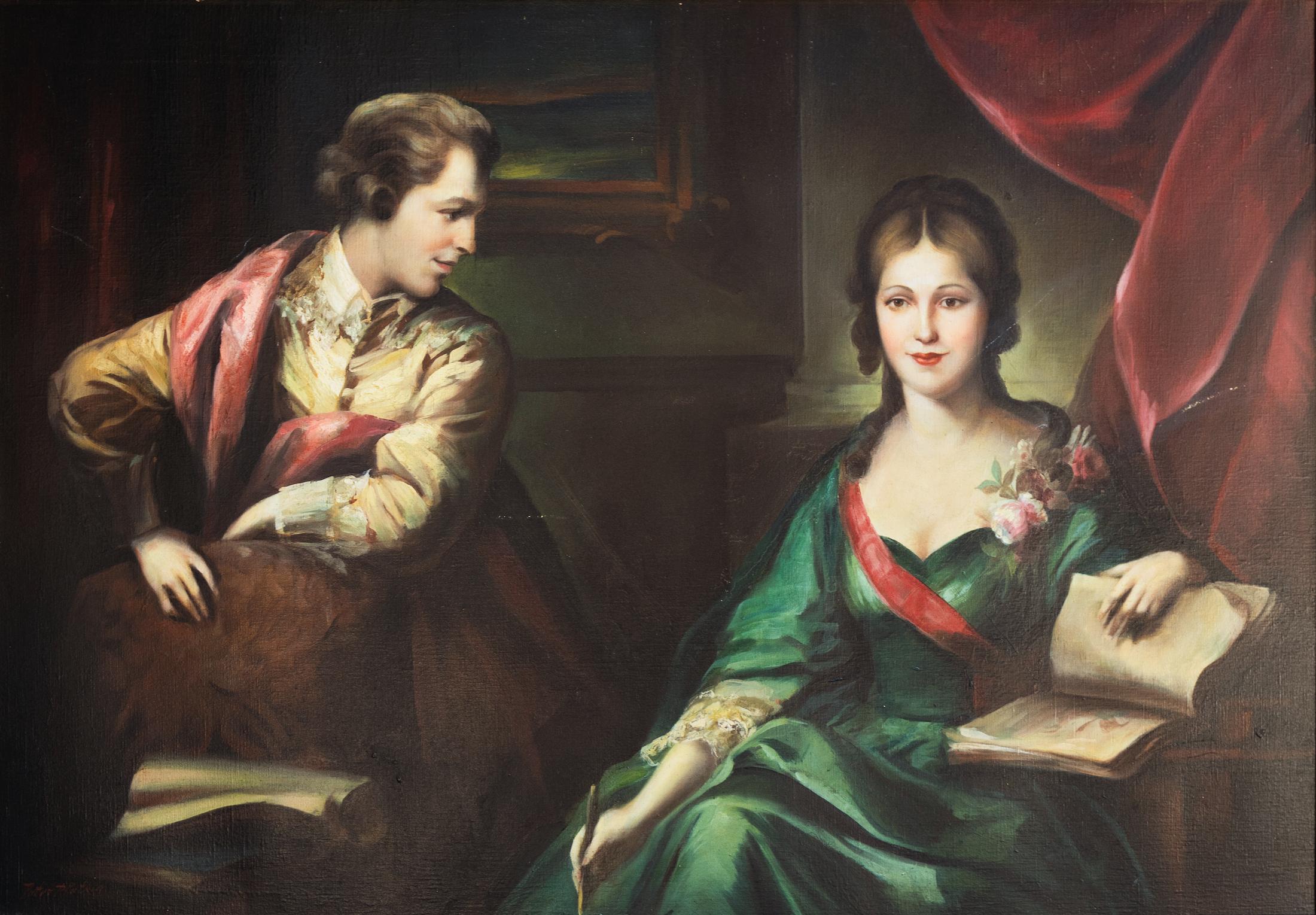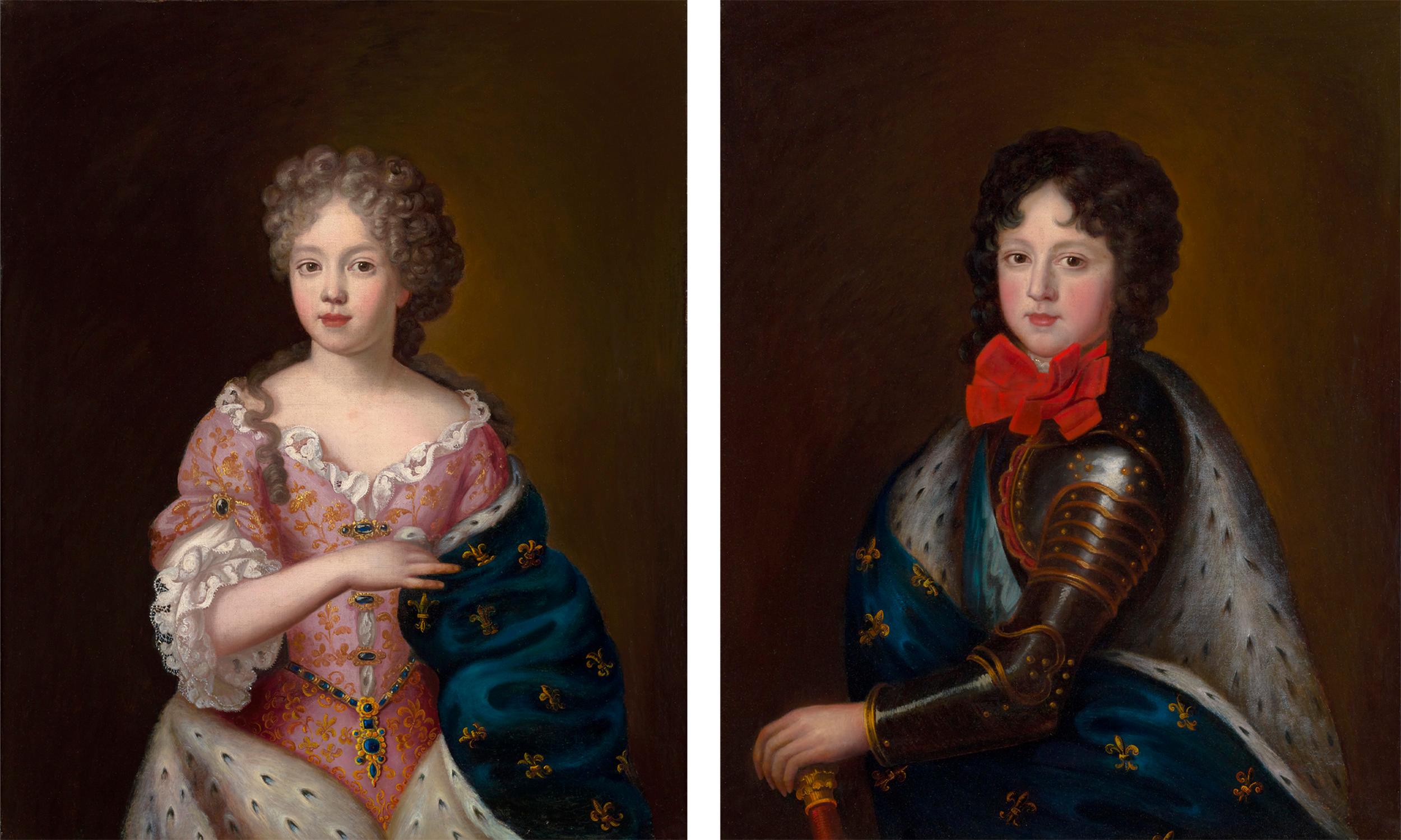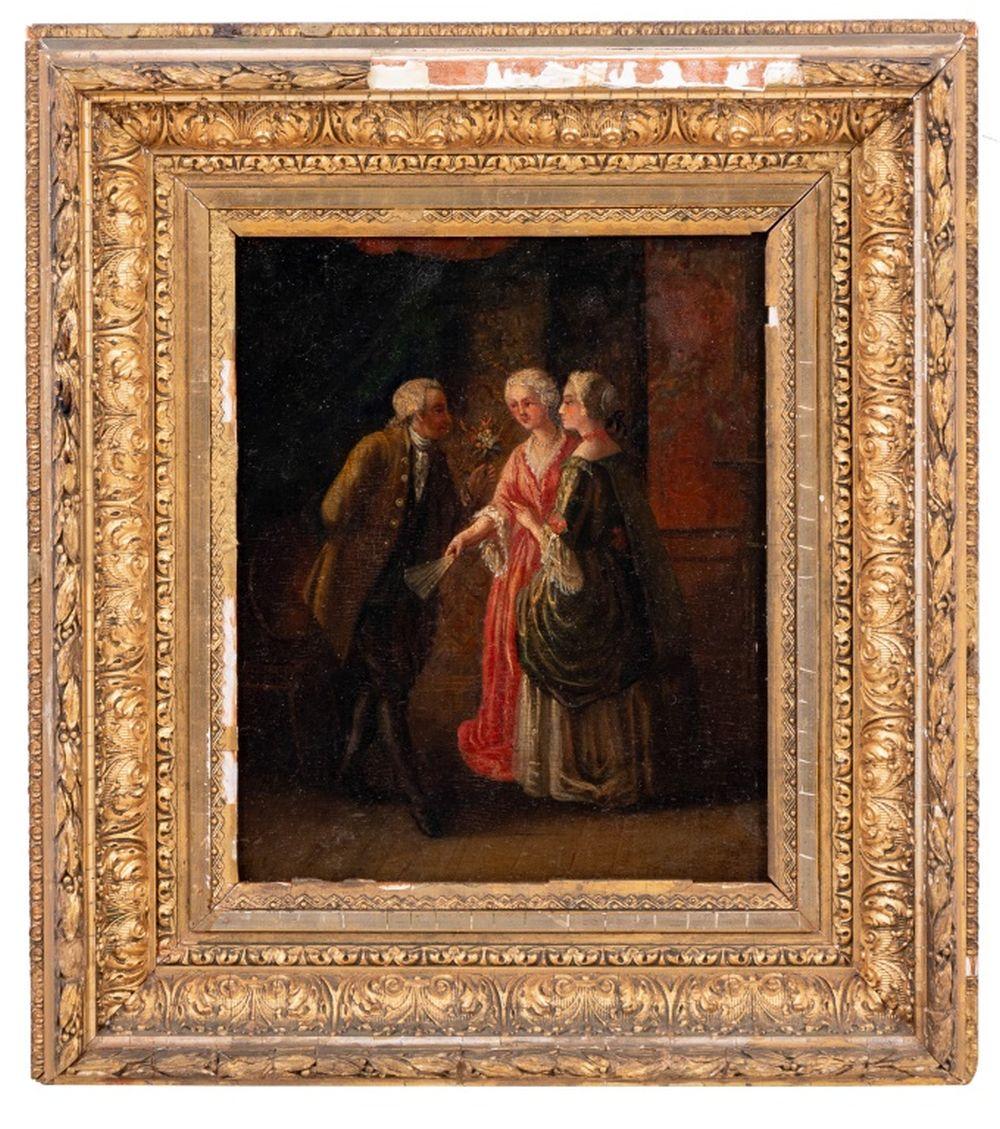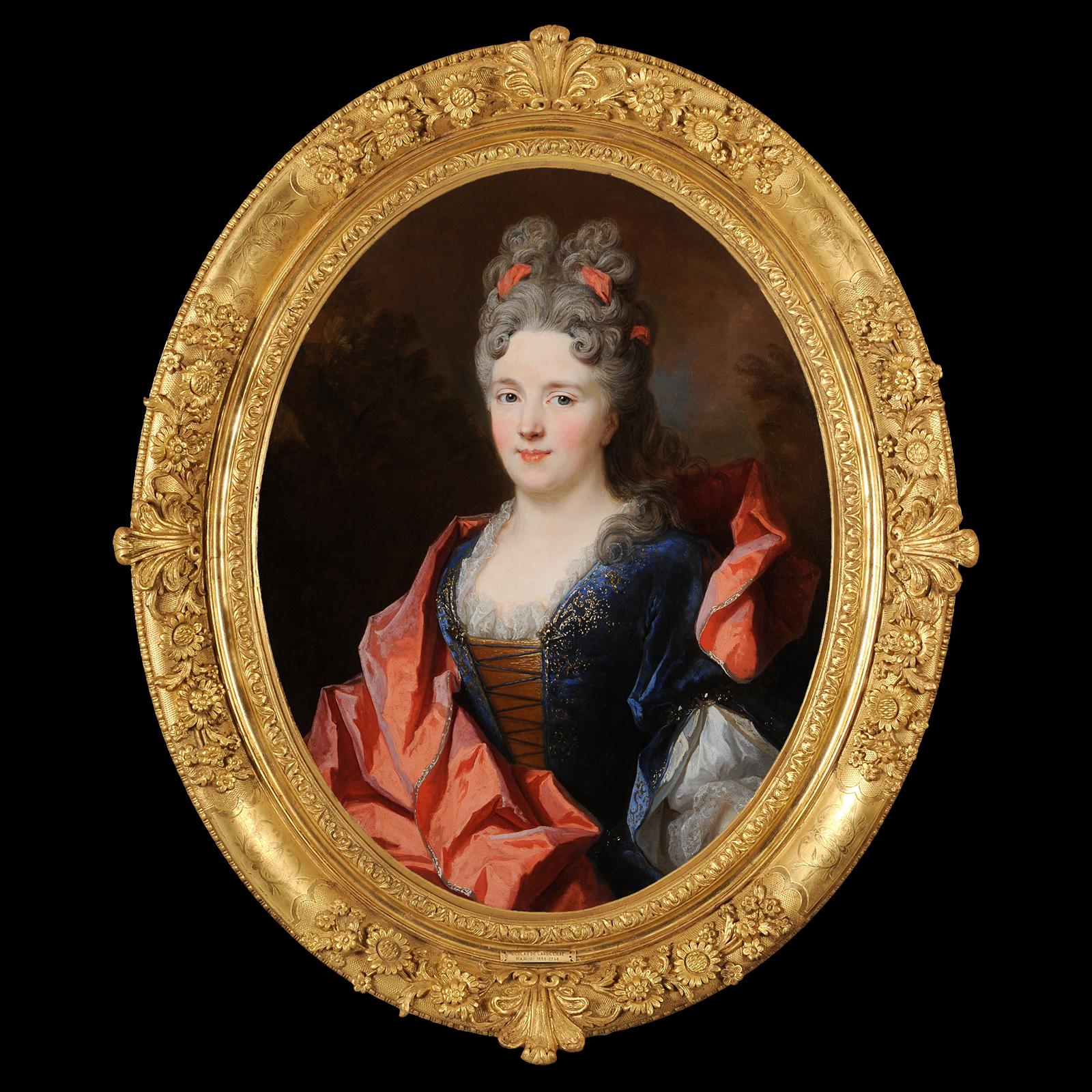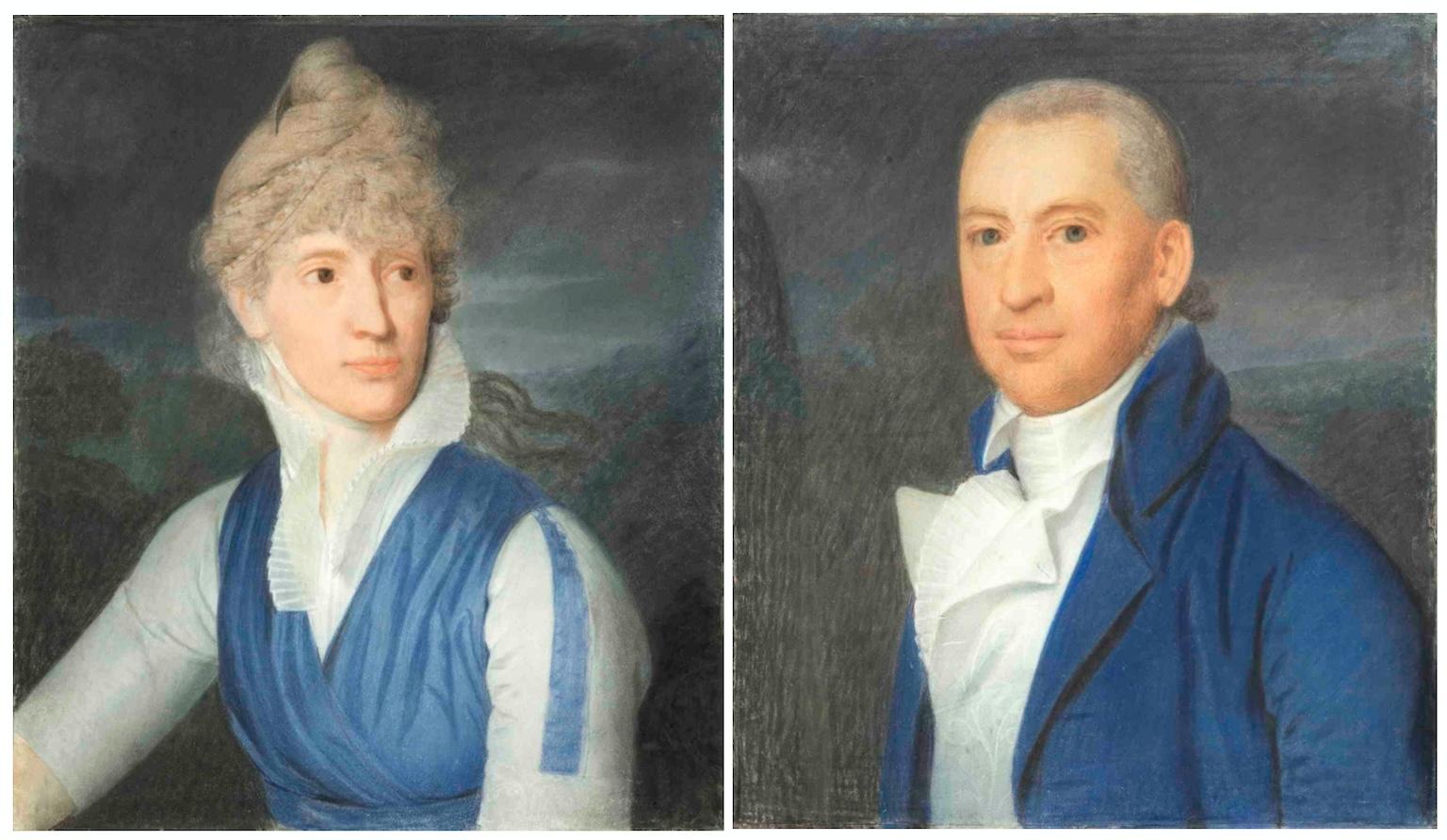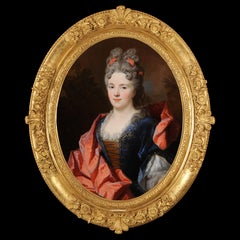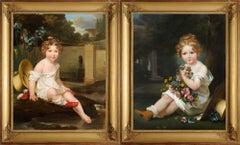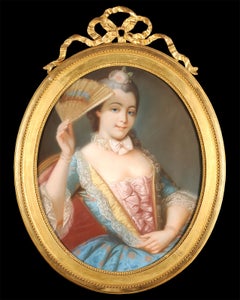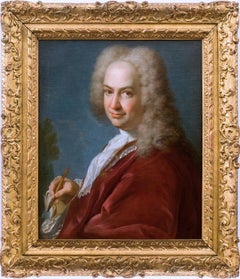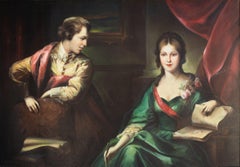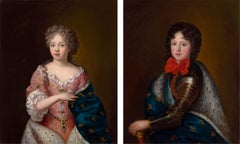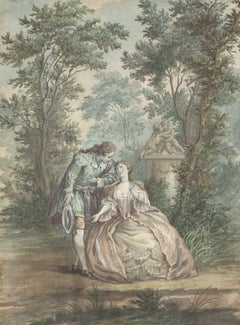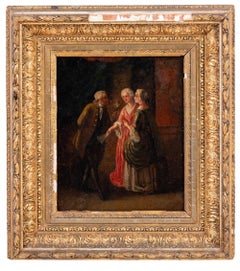Items Similar to Portrait of a couple
Want more images or videos?
Request additional images or videos from the seller
1 of 7
Jean-Baptiste SanterrePortrait of a coupleCirca 1690
Circa 1690
$38,507.10
£28,508.84
€32,000
CA$53,315.77
A$58,208.06
CHF 30,516.10
MX$706,959.27
NOK 381,096.44
SEK 359,856.66
DKK 243,622.84
About the Item
Jean-Baptiste SANTERRE
(Magny en Véxins 1651 - Paris 1717)
Portrait of a couple
Oil on original oval canvas
H. 115 cm; L. 90 cm (140 x 115 cm with frame)
Around 1695
Jean-Baptiste Santerre began his apprenticeship in 1673, under the direction of the portraitist François Lemaire, nephew of Jean Lemaire-Poussin, before entering the Bon Boulogne studio , where he meets young French artists such as Jean Raoux, Nicolas Bertin, or Robert Levrac-Tournières. Very quickly, his style emerged from the Italianate influence of his master and turned towards the study of Nordic artists, Dou, Mieris, Rembrandt and especially Van Dyck, whose models he admired for their elegance and the richness of their draped. A mention of Mercury also testifies to his attachment to the study of nature and his interest in anatomy. Few traces remain of Jean-Baptiste Santerre's activity before 1698, when he was admitted to the Royal Academy. His reputation as a portrait painter was no doubt already well established by this date, since around 1699 he produced the portraits of Boileau and Racine, which testify to his fame in Parisian artistic cultural circles. The daughter of the Prince of Condé, the Duchess of Burgundy, as well as the Regent will also be part of his models. Nevertheless, Jean-Baptiste Santerre was never considered a rival by the great portrait painters of his time, Nicolas de Largillierre, Hyacinthe Rigaud or François de Troy, and it was mainly to his fantasy figures that he owed his fame.
Our formidable double portrait must have had a turbulent history. Still displayed on its original canvas and stretcher, this large format saw the names of two characters added to its composition, certainly around 1800/1810. At that time a frame from the Empire period framed it, and these names were added by descendants who paid little attention to the details of the story and the faces of their ancestors. The marriage of the two people whose names are inscribed dates back to 1755, that is to say about sixty years after the creation of our painting. Let us therefore forget the inscribed names, which are now part of the history of the work but with which they may have no genealogical connection. Characteristic of Santerre by the soft and rosy faces, by the draperies with unnatural breaks, by the postures, this double portrait is composed as two distinct portraits. The first is that of the man, seated at his work table, and the second is that of Madame, as if juxtaposed in the background. The man's red collar and bow are reminiscent of those worn during the reign of Louis XIV, contrasting with his loose, graying hair, totally out of fashion at the time.
- Creator:Jean-Baptiste Santerre (1651 - 1717, French)
- Creation Year:Circa 1690
- Dimensions:Height: 45.28 in (115 cm)Width: 35.44 in (90 cm)
- Medium:
- Movement & Style:
- Period:1690-1699
- Condition:
- Gallery Location:BELEYMAS, FR
- Reference Number:1stDibs: LU1857215613032
About the Seller
3.0
Vetted Professional Seller
Every seller passes strict standards for authenticity and reliability
Established in 2017
1stDibs seller since 2022
5 sales on 1stDibs
- ShippingRetrieving quote...Shipping from: BELEYMAS, France
- Return Policy
Authenticity Guarantee
In the unlikely event there’s an issue with an item’s authenticity, contact us within 1 year for a full refund. DetailsMoney-Back Guarantee
If your item is not as described, is damaged in transit, or does not arrive, contact us within 7 days for a full refund. Details24-Hour Cancellation
You have a 24-hour grace period in which to reconsider your purchase, with no questions asked.Vetted Professional Sellers
Our world-class sellers must adhere to strict standards for service and quality, maintaining the integrity of our listings.Price-Match Guarantee
If you find that a seller listed the same item for a lower price elsewhere, we’ll match it.Trusted Global Delivery
Our best-in-class carrier network provides specialized shipping options worldwide, including custom delivery.More From This Seller
View AllPresumed portrait of Marie-Anne de Bourbon
By Nicolas de Largillière
Located in BELEYMAS, FR
Nicolas de LARGILLIERRE
(Paris 1656 – 1746)
Portrait of a woman, presumed to be Marie-Anne de Bourbon, Princess of Conti (1666-1739)
Oil on oval canvas
H. 8...
Category
Early 1700s French School Figurative Paintings
Materials
Canvas, Oil
Portraits of two sisters
Located in BELEYMAS, FR
Bernard GAILLOT
(Versailles 1780 – Paris, 1847)
Portraits of two sisters
Pair of oil on canvas
H. 92 cm; L. 73 cm
One signed
Student of David, he presented his first works at the Sa...
Category
1810s French School Portrait Paintings
Materials
Canvas, Oil
Portrait of a young woman in Louis XV period dress
Located in BELEYMAS, FR
French School
Portrait of a young woman in Louis XV period dress
Pastel on paper mounted on oval canvas
H. 68 cm; W. 54 cm (Frame: H. 102 cm; W. 71 cm)
18th century frame, anti-refle...
Category
Mid-18th Century French School Figurative Paintings
Materials
Canvas, Paper, Pastel
Presumed artist self-portrait
Located in BELEYMAS, FR
Louis-Gabriel BLANCHET
(Versailles, 1701 – Rome, 1772)
Presumed self-portrait of the artist
Oil on canvas
H. 73 cm; W. 60 cm
Circa 1730
Originally presented in a Restoration period frame with a "Mignard" cartouche, this beautiful painting initially appeared to us as a work from northern Italy. However, it exuded a rather French form of refinement, suggesting that its artist may have assimilated a dual influence from both sides of the Alps.
We thank our colleague and friend Philippe Mendès for spontaneously and judiciously "bringing out" the name of Louis-Gabriel Blanchet, a Romanized French portraitist, whose spirit and stylistic characteristics we clearly recognize here.
Blanchet's "French" years, before his final departure for Rome in 1728, following his winning of the second Grand Prix for painting after Subleyras in 1727, are extremely poorly documented. His father, Gabriel, was valet to Blouin, himself Louis XIV's first valet at the time. According to Thierry Lefrançois, Blanchet was one of the few students of Nicolas Bertin (1667-1736), whose studio he is said to have joined in the early 1720s. At a baptism on March 24, 1724, where he was godfather, he is mentioned as a painter in the picture store of the Duke of Antin, the director of buildings between 1708 and 1736. At this time, he was probably already married to Jeanne Quément, with whom he had a daughter also named Jeanne, who would marry Nicolas Aviet, the son of a valet in the queen's wardrobe, in Versailles in 1738.
When Blanchet arrived in Rome in October 1728, he was accompanied by Subleyras, Trémolières, and Slodtz. He enjoyed the goodwill of Vleughels, the director of the Académie de France, which had been based at the Palazzo Mancini since 1725, even though the latter was not always kind to our resident. From 1732, he was under the protection of the Duke of Saint-Aignan when he took up his post as ambassador to Rome. Along with Slodtz and Subleyras, they formed a trio of friends, joined by Joseph Vernet shortly after his arrival in Rome in 1734. Slodtz and Blanchet, on the occasion of Subleyras's marriage in 1739, were there to attest that their friend was not bound by any marital commitment, and Blanchet was a witness at Vernet's wedding in 1745.
It is most likely from these early years in Rome that our portrait of the artist dates, the expression and turn of his face irresistibly reminiscent of a self-portrait. The still relatively youthful features may correspond to Blanchet's thirty-something years, and the fluffy wig was still fashionable at this time.
The painting fits well with the depiction of a young painter wanting to display both the beginnings of success and a certain simplicity or restraint. A slight smile expresses a form of assurance in this man with a gentle, sincere gaze and a face radiating a keen sense of wit. We find here the air of intimacy present in almost all of Blanchet's portraits, even those from the 1750s and 1760s, as well as an almost complicity with the viewer. The spirit of the painting is quite close to that of the presumed portrait of Bouchardon (painted around 1730) and the portrait of Pannini, painted in 1736, but it possesses a more natural quality, notably thanks to the absence of decorum. Our work exhibits the characteristics of Blanchet's paintings: elegance, luminosity (especially in the whites), vibrant and refined colors (here, the harmony of the garnet of the garment and the slate blue of the background, whose uniformity is tempered by a very sketched landscape and a grove of greenery), light complexions, rather rosy cheekbones, often full lips, and rather tight framing.
According to the Academy's rules, Blanchet's stay should have ended in the spring of 1732, but, for reasons unknown, he remained in the Eternal City until his death, as did his friend Subleyras, with whom he shared accommodation until the late 1730s. The latter regularly called upon him to collaborate on his paintings, such as The Meal at Simon's. Through Saint-Aignan's intervention, Blanchet was employed in the late 1730s by the Stuart princely family, then exiled in Italy. He notably produced copies (now lost) after Liotard of the portraits of Charles Edward and Henry Benedict, the sons of James III Stuart. The latter also commissioned three other portraits (now in the National Portrait Gallery in London), whose more formal character contrasts with the intimate spirit of Blanchet's portraits. Blanchet frequented English painters, such as the landscape painter Richard Wilson, and studied with the Scottish portraitist Katherine Read...
Category
1730s French School Portrait Paintings
Materials
Oil, Canvas
Portrait of a man during French Revolution
Located in BELEYMAS, FR
Antoine VESTIER, attributed to
(Avallon, 1740 - Paris, 1824)
Portrait of a man under the Revolution
Oil on canvas
H. 46 cm; L. 37 cm
Circa 1793-95
This beautiful unsigned portrait i...
Category
1790s French School Figurative Paintings
Materials
Canvas, Oil
Portrait of Madame Leblond
Located in BELEYMAS, FR
French school circa 1815
Portrait of Madame Leblond
Oil on canvas
H. 66 cm; W. 55 cm
Named on the back
Comparable to the works of painters such as Louis Hersent, our portrait, unsig...
Category
1810s French School Figurative Paintings
Materials
Canvas, Oil
You May Also Like
Portrait of a Man and Woman
Located in Austin, TX
Painting by Peter Plonkin (b. 1879)
32 x 46 inches
Oil on Canvas
Category
Early 20th Century Romantic Portrait Paintings
Materials
Canvas, Oil
Pair of Royal Portraits of the Duke and Duchess of Burgundy
By Pierre Gobert
Located in New Orleans, LA
Follower of Pierre Gobert
18th century French
The Duke and Duchess of Burgundy
Oil on canvas
Refinement and intricacy characterize these royal portra...
Category
18th Century Portrait Paintings
Materials
Canvas, Oil
Amorous Couple
By Philibert-Louis Debucourt
Located in Fairlawn, OH
Amorous Couple
Watercolor on laid paper, c. 1810
Unsigned
Provenance: Emile Wolf (1899-1996)
The art collection of Emile Wolf was dispersed by Sotheby and Stair Galleries.
Condition: Excellent
22K gold leaf finishes corner frame (see photo)
“Mr. Wolf’s collection reflects a lifelong commitment to the arts. Although a mainstay of the Old Masters art scene in New York, Mr. Wolf’s collection spanned centuries and genres. He was an impassioned collector, and his Fifth Avenue apartment was filled with paintings and drawings that hung from floor to ceiling in every room. Space void of art was lined with an extensive library of art books that fueled his ardent collecting. Mr. Wolf took great joy in sharing this collection and his ideas with art historians, collectors, dealers and university students.
The Wolf collection included masterworks from every influential and groundbreaking Impressionist and modern artist of the late 19th and early 20th centuries, ranging from an outstanding grouping of works on paper by Picasso, Pissarro, and Cezanne to a Renoir oil...
Category
1810s Romantic Figurative Drawings and Watercolors
Materials
Watercolor
French School "The Proposal", 19th C.
Located in Astoria, NY
French School, "The Proposal", Oil on Oak Panel, 19th century, depicting a gentleman presenting a bouquet of flowers to a young lady and her chaperone, unsigned, giltwood frame. Imag...
Category
19th Century French School Figurative Paintings
Materials
Oil, Panel
Due ritratti figurativi aristocratici pastelli su pergamena primi del XIX secolo
Located in Florence, IT
Sul cartoncino applicato nella cornice è riportata l'annotazione, a penna e in grafia Kurrent, "Urgroßvater Ludwig Fr(ei)h(e)r(r) von Keller" "Urgroßmutter ...
Category
Late 18th Century Other Art Style Portrait Drawings and Watercolors
Materials
Parchment Paper, Pastel, Cardboard
Portrait of the French Princess, late 17th c. French school
Located in PARIS, FR
Portrait of the Princess of Conti - Attributed to Louis Ferdinand Elle the Younger (1648-1717)
Late 17th century French school
Oil on canvas, h. 100 cm, l. 80 cm
Important Louis XIV ...
Category
Late 17th Century Old Masters Portrait Paintings
Materials
Canvas, Oil
More Ways To Browse
Francois De Troy
Andy Warhol Studio 54
Battista Salvi
Battista Sassoferrato
Female Self Portrait Paintings
Floris Frans
Girl Privates
Jack King
Jorunn Mulen
Margaret Thomas
Oil Painting And Sir
Old American Portraits
Peasant Girl Painting
Peter Max Zero
Pierre Mignard
Portrait Of A Knight
Portrait Painting Of Princess
Reuben Tam
